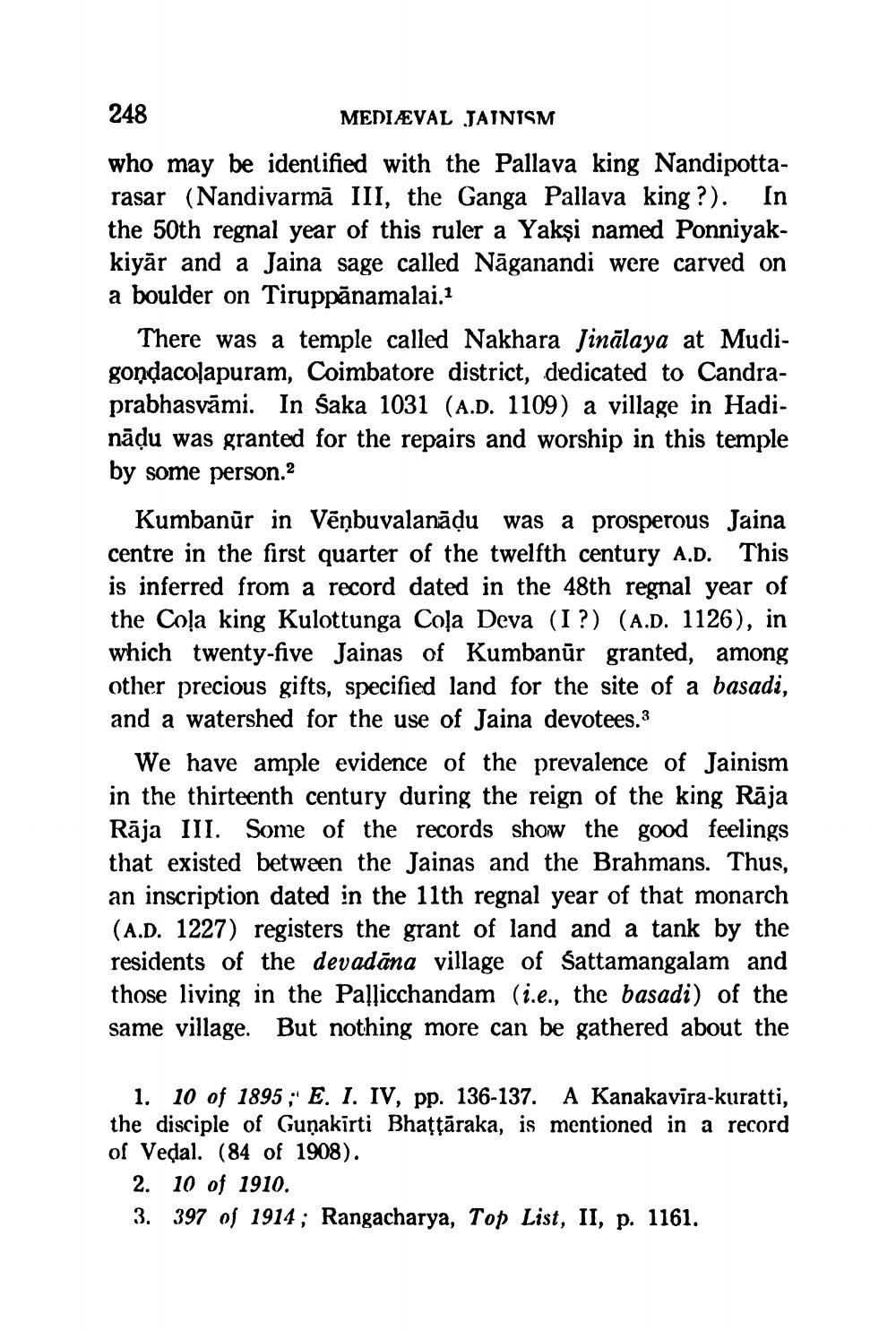________________
248
MEDIEVAL JAINISM
who may be identified with the Pallava king Nandipottarasar (Nandivarmā III, the Ganga Pallava king?). the 50th regnal year of this ruler a Yakşi named Ponniyakkiyār and a Jaina sage called Nāganandi were carved on a boulder on Tiruppanamalai.1
In
There was a temple called Nakhara Jinalaya at Mudigondacolapuram, Coimbatore district, dedicated to Candraprabhasvāmi. In Saka 1031 (A.D. 1109) a village in Hadināḍu was granted for the repairs and worship in this temple by some person.2
Kumbanur in Vēņbuvalanāḍu was a prosperous Jaina centre in the first quarter of the twelfth century A.D. This is inferred from a record dated in the 48th regnal year of the Cola king Kulottunga Cola Deva (I?) (A.D. 1126), in which twenty-five Jainas of Kumbanur granted, among other precious gifts, specified land for the site of a basadi, and a watershed for the use of Jaina devotees.3
We have ample evidence of the prevalence of Jainism in the thirteenth century during the reign of the king Rāja Rāja III. Some of the records show the good feelings that existed between the Jainas and the Brahmans. Thus, an inscription dated in the 11th regnal year of that monarch (A.D. 1227) registers the grant of land and a tank by the residents of the devadāna village of Sattamangalam and those living in the Pallicchandam (i.e., the basadi) of the same village. But nothing more can be gathered about the
1. 10 of 1895; E. I. IV, pp. 136-137. A Kanakavira-kuratti, the disciple of Guṇakirti Bhaṭṭāraka, is mentioned in a record of Vedal. (84 of 1908).
2. 10 of 1910.
3. 397 of 1914; Rangacharya, Top List, II, p. 1161.




